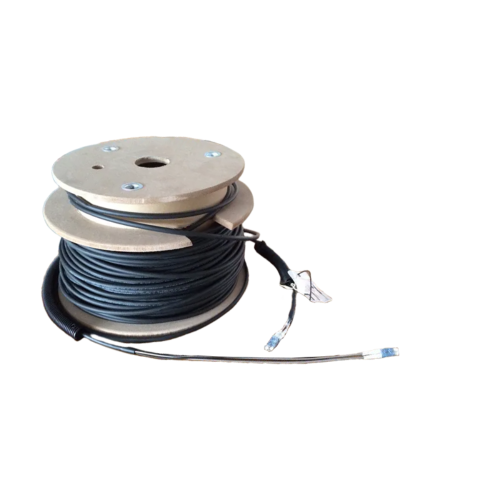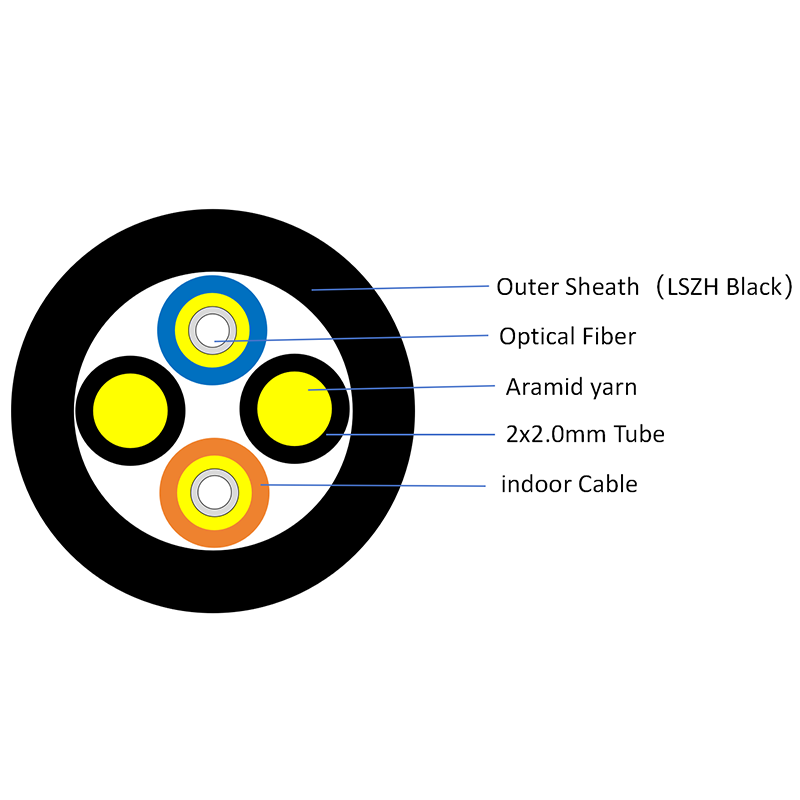Əlimi Əsasında Lif optik əlaqəsi
İşıq Impulsları Necə Məlumat Köçürür
Optik liflərdə, məlumatın ötürülməsi işıq impulsları vasitəsilə realizə olunur. Bu impulslar məlumatları kodlaşdırmaq üçün modulyasiya edilir, bu da şəbəkələr arasında sürətli və effektiv kommunikasiyaya imkan verir. Bu prosesin əsas elementlərindən biri On-Off Keying (OOK) kimi mürəkkəb modulyasiya üsullarının istifadəsidir, ki bu, işıq mövcudluğunun və ya yoxluğunun binar məlumatları təmsil etməsinə imkan verir. Eyni dərəcədə mürəkkəb olan Quadrature Amplitude Modulation (QAM) isə iki amplituda-modulyasiya sinyalını bir kanala birləşdirir, bu da məlumatların kodlanması prosesini açıq şəkildə artırır. məlumatların kodlanması imkanları. Bu üsullər haqqında etdiklərimiz araşdırma, onların məlumat köçürmə sürətini yaxşılaşdırmaqda çox vacib rol oynadığını göstərir. Işıq impulslarını effektiv şəkildə modulyasiya edərək, fiber optika sistemləri səhl, yüksək sürətdə köçürməyə imkan verir bağlantılar muasir digital kommunikasiyalarda vacibdir.
Ümumi Daxili Rifleksiya: Əsas Prinsip
Ümumi Daxili Rifleksiya (UDR), işığın bir fiberin daxilindən böyük məsafələr boyu seyr etməsinə imkan verən prinsipdir optik lif daha az itirilmə ilə. Bu fənomen, işıq fiberin sərhədini kritik bucaqdan daha böyük bucaqdə vurduqda baş verir və bu, fiberin nüvəsi və qatı materiallarının refraksiya indeksləri tərəfindən müəyyən olunur. Riyazi olaraq, Snell qanunu vasitəsilə ifadə olunur ki, bu, incidən və refraksiya bucaqlarını refraksiya indeksləri ilə əlaqələndirir. UDR-ni istifadə edərək, fiber optika sistemləri güclü sinyalları saxlaya bilər, uzun məsafəli məlumatın ötürülməsi bu da geniş şəbəkələrdə kommunikasiyanın sadəcə vaxtlar boyu stabilləşdirilməsini və güvəndirlənməsini təmin edir.
Müasir Fiber Optika Şəbəkəsinin Komponentləri
Mödvən optik lif şəbəkəsi bir neçə əsas hissədən ibarətdir ki, effektiv internet və məlumat xidmətləri təmin etmək üçün uyğun şəkildə işləyirlər. Optik lif kabeları məlumatın ədvət pulsu kimi çatdırılması üçün əsas ortam kimi xidmət edir. Qoşucular isə şəbəkənin müxtəlif hissələri arasında səhv olmayan qoşulmaları təmin edir və sinyal tamamlığı . Dəyişgəclər və routerlər, verilər trafikini effektiv şəkildə yönəltməkdə və necə idarə etməkdə mühüm rol oynayır məlumat paketləri şəbəkədə necə göndərilir və qəbul edilirsiniz idarə edir. Bu bir-birinə bağlı hissələr şəbəkəsinin yüksək sürətli əlaqənin asosunu təşkil edir və çağdaş kommunikasiya və məlumat mübadiləsinin tələblərini ödəyən məlumat xidmətlərinin güvəndiriləcəyini təmin edir. Bu elementləri inteqrasiya etməklə optik lif şəbəkələri bənzərsiz kapasitə və effektivliyi saxlayır.
NİYƏ Lif optik əlaqəsi Digər alternativlərlə müqayisədə üstünlüy göstərir
Sürət müqayisəsi: Lif vs. Sənəksiz genişband
Lif optik əlaqəsi ultra-sürətli məlumat köçürmə sürətləri , gəncaylıq vasitələri ilə əldə edilə biləcək olanların üstünlüyünü təşkil edir. Optik lif şəbəkələri 1 Gbps-dən çox sürətləri təmin etməkdə əsasən fərqli olur, o birbaşa istifadəçilər arasında bölünən şəbəkə bandı səbəbindən zirvə vaxtlarında çətinlik yaşaya bilər. Bu sürət üstünlüyü, məlumatları işığın pulssu qullandıraraq göndərmək olanağına malik optik lif kabelinə bərabərdir, bu da tələbli sahələrdə daimi sürətli məlumat akışını təmin edir. Sənayə tədqiqatları bu performans fərqini tez-tez vurğulayıb, optik lifin üstünlüyünü nöqtələmişdir bandüq imkanları daha sürətli məlumat kodlaşdırılması və göndərməsi ilə çevrilməsi ilə, bu da onun yüksək sürətli internet tələb edən ortaqlarda ideal həll olduğu üçün mövcuddur.
Qızıl və kabel şəbəkələrə nisbətən güvənlilik
Optik lifin qızıl və kabel şəbəkələrindən asılı olmayan böyük üstünlüyü firibkarlıq . Optik liflər daha az çətinliklə maraqlara məruz qalır elektromaqnetik zədələnmə , uzun məsafələrdə sinyal zədələnməsini azaltır. Klassik bakır kabellərə qarşı olaraq, optik fiber kabelləri korrozziyaya mənqu edir, bu da onların daha uzun istifadə müddəti və az altıxana ehtiyacına səbəb olur. Telekommunikasiya xidmət sahibkarları, optik fiber şəbəkələrinin bakır sistemlərə nisbətən daha az işarəli saxlanma dövrünü bildirirlər. Bu optik fiberdəki güclü struktur, bizneslər üçün əhəmiyyətli əməliyyatlarda güvəndirici əlaqəni təmin edən stabilləşmiş və davamlı internet bağlantısı yaradır, lakin klassik şəbəkələr daimi saxlama və sinyal interfersiyası ilə problemlərlə üzləşirlər.
Yüksek Tələbli Tətbiqlər üçün Band Genişliyi Kapasiti
Optik fiberlər təqdim edir band genişliyi kapasiti bakır və bəsiz şəbəkələrdən çox daha çoxdur, bu da HD striming, abidə hesablama və böyük məlumat köçürməsi kimi yüksək tələbli tətbiqlər üçün uyğunluğunu təmin edir. Optik fiberin yüksək band genişliyi, sürətin azalmadan olaraq simultaneous məlumat köçürmələrini dəstəkləyir. Band genişliyi standartlarına və gələcək məlumat trafiği kəsrək proqnozları ilə, bu imkan gələcik onillik ərzində artan tələbləri qarşılamaq üçün əsasdir. Optik lif şəbəkələri əsasən skalabeldir, internet istifadəsi tələblərinin artması ilə uyğunlaşdırılması üçün asan şəkildə genişləndirilə bilər. Bu skalabellik, mövcud yüksək band çatmaqla birgə, güclü rəqəmsal infrastrukturayı öncələndirən təşkilatlara görə optik lifi praktik seçim kimi təqdim edir.
Əsas faydalar Lif optik əlaqəsi mövzu Şəbəkələr üçün
Real-Vaxtli Tətbiqlər Üçün Gecikmə Azaltma
Optik lif sistemləri gecikməni minimuma endirmədə uğurludur, bu da onların ideal edər real-vaxtli tətbiqlər kimi VoIP, oyunlar və video konfranslar üçün. Gecikmə, məlumatların köçürülmesi əvvəlki gecikmədir. köçürmə məlumat talimatları izləyən başlayır, bu da bu xidmətlərə böyük təsir edə bilər. Optik liflər məlumatların əksərən gərgin sinyallarından daha sürətli olan işıq ilə göndərməyə istifadə edir. Bu isə minimum gecikmə və daha yaxşı təcrübələr təmin edir. Tədqiqatlara görə optik liflər digər texnologiyalarə nisbətən daha az gecikmə təqdim edir və anında kommunikasiya tələb edən tapşırıqlar üçün rəqabət qabiliyyəti yaradır.
Gelecek Bandwidth Tələblərinə Uyğun Olan Qabiliyyət
Optik lif şəbəkələri bənzərməz şəkildə təklif edir ölçmü Klonduqluq , onlar müstəqlədən az səslənmə ilə gələcək şəbəkə bandı tələblərini ödəyə bilirlər. Optik lif sistemini yeniləmək bir çox halda tam şəbəkənin əvəzinin yerinə təsnif edilməsi daxil olmaqla cihazların əvəzinə alınması tələb olunur, bu isə artan məlumat ehtiyacını qarşılaması üçün daha asan genişlənməni təmin edir. İnternet istifadəsi striming xidmətləri və bulud hissələndirməsi kimi tətbiqlər tərəfindən itirdikçə davam edir və skalasiya edilə bilən həllər mövcuddur. Proqnozlar göstərir ki, dünya inteqral internet trafiki növbəti on illik dövrədə eksponensial şəkildə artacaq və optik liflər bu rəqəmsal böyüyüşü ilə uyğunlaşmaya kömək edən uyğunluq tələb edir.
Məlumatın sıxışdırılması qarşısında artırılmış təhlükəsizlik
Optik liflərin ən böyük avantajlarından biri də onların artırılmış təhlükəsizlik karşı məlumatın sıxışdırılması dır. Bakır kabellər kimi, aşkarlıqla təşkil edilə bilən lif kabelləri çox daha çətin fərq edilir. Bu da onları məlumat təhlükəsizliyi haqqında endirən bizneslər və insanlar üçün ideal seçim edir. Lif kabelləri asılıq sənədlərini rahatlıqla fərq etmirlər, beləliklə də riski azaldırlar verilər çatışmaları . Kibersüniyyətinqarlıq araşdırma nəticələri göstərir ki, geleneksi bakır şəbəkələri optik liflərə nisbətən daha yüksək səviyyədə təhdidlər taşır təhlükəli risklər bu da güvəndirici kommunikasiya kanalları üçün lif əsaslı infrastrukturə keçid etdirir.
Növbəti texnologiyalarda Optik Lif Uğurluğu
25G/50G PON: Ev və İş Internetini İnovasiya Edərək Dəyişdirir
25G və 50G Pasiv Optik Şəbəkələrin (PON) ortaya çıxması ev və iş internet üslubunu dəyişdirir . Bu texnologiya, foton kabelinin effeksiyasından istifadə edən ortaq şəbəkə arxitekturasi vasitəsilə çoxsaylı istifadəçilərə yüksək sürətli birləşmələr təmin edir. Geleneksi shemalardan fərqli olaraq, PON daha az infrastuktur və xidmət tələb edir və fibrlərdən artıq performans göstərir. Kəsbi və qərsi ərazilərdə PON texnologiyası internet girişinə aid olan problemləri həll etmişdir, bu isə əlaqənin yaxşılaşması ilə cəmiyyətlərin inkişaf etdiyi halını göstərən həqiqi hallarla səsləndirilir. Bu Texnologiyaların coğrafi barierləri aşmaq və güclü, gələcəyə dair həllər təklif etmək imkanı var.
İstənilən işarəli ədədlər və orbitallıq açısal momentum sıxıcıqları
Optik liflərdə istifadə edilməsi haqqında son növbədə əldə edilən sıxıcıqlar və orbitallıq açısal momentum (OAM) sıxıcıqları data iletim kapasitetində böyük bir atım va'də edir data iletim kapasiteti . Işıq şuxetlərini buraxmaqla, elmlər optik lifdən eyni vaxtda çatdırılan məlumat miqdarını əhəmiyyətli dərəcədə artırır və onun kapasiti effektiv şəkildə yaxşılaşdırılır. Bu innovativ texniklər amillikdə nümayiş etdirilən praktiki təsirlərlə daha yüksək gəçid sürətləri ilə tanış edir ki, bu əvvəllərdən daha yüksəkdir. Araşdırıcılar bu inkişafı uğurla daha yüksək sürətlərlə məlumatların çatdırılması ilə göstərir, daha effektiv və sürətli sistemlər üçün yol açaraq. internet üslubunu dəyişdirir . Bu texnologiyada atılan adımımlar bant genişliyi artan rəqəmsal dünyamızda.
5G ilə integrasiya və Smart Şəhər Infrastrukturu
Optik lif əlaqəsi 5G şəbəkələrinin yerləşdirilməsinin və inqelligent şəhər infrastrukturalarının . Ultra-sürətli və güvəndirləşmiş əlaqə kanalları üçün lazımi asosları təmin edərək, optik liflər yeni intellektual texnologiyaların səhləşdirilən integrasiyasını mümkün edir. Bu infrastruktur 5G şəbəkələrini dəstəkləmək üçün əhəmiyyətli dir. 5G şəbəkələri , ki effektiv işləmək üçün yüksək kapasitə və aşağı gecikmə tələb edir. Şəhər planlayıcıları və iştirakçılar, şəhər infrstrukturlarını artırmaqda optik kilidlərin əsas bir element olduğu üçün akıllı, daha effektiv şəhərlərə gətirib çıxır. Bu sahədəki innovasiyalar, akıllı trafig sistemlərindən real-vaxt məlumat tətbiqləri , sakinlərin istəklərinə daha uyğun şəhərlər yaradır. Texnologiya sahəsində sürətlə dəyişən prosesdə, optik kilidlər sistemləri şəhərlərin əlaqə və innovasiya sahəsində öncül rəftar göstərməsinini təmin edir.

Optik Kilidlər Əlaqəsini Tətbiq Et: Amali Nəzərə Alınan Məsələlər
FTTH vs. FTTB: Sözlü Mağlumat Modelini Seçmək
Nəzərə alarkən lif optik əlaqəsi dağıtımı, Evə Fiber (FTTH) və Binağa Fiber (FTTB) arasından seçim çox vacibdir. FTTH, sərbəst şəhər əraziləri və internet girişini güclü olanaklarla axtaran yoğunlaşmış yerləşik sahillər üçün ideal olaraq səsli interneti doğrudan məskun vahidlərə təqdim edir. Tənha bir tərəfdən, FTTB, çox kirəçi binalar və ya komplekslərdəki ümumi nöqtəyə ortaq fiber bağlantısı təqdim edir, şəhər daxili aparment blokları və biznes mərkəzlərində moderate xərclərlə və effektiv istifadə ilə məşhurdur. Səhipli analizlər adətən göstərir ki, direkt xidmət təhvilatı səbəbindən FTTH, məskun və qəribə pazarlarında populyardır, lakin FTTB, fiber infrastrukturunun bir bina daxilində çoxsaylı istifadəçiləri effektiv şəkildə təmin etdiyi şəhər ərazilərində üstünlükdür. Bu dağıtım modellərini anlamaqlə, bizneslər və şəhər idarəetmələri xüsusi band genişliyi ehtiyaclarını və xərclərə görə nəzərə alaraq effektiv şəkildə işləyirlər.
Maliyyə analizi və uzun müddətli ROI
Dəqiqlikli xərclər analizi göstərir ki, əvvəlcədən quraşdırılması faydalı sistemlər geleneksel qızartdan daha yüksəkdir, lakin uzun müddətli investisiya geri gəlmişi (ROI) muhafizə və işləmə xərclərinin azalması ilə əhəmiyyətli olur. Fiberoptik sistemlər üstünlüklü bant genişliyi və çevrilməsizlikdə daha az hassas olduğundan, bu da azaldılmış kəsintilər və azalmış muhafizə xərcləri ilə nəticələnir. Maliyyə tədqiqatları göstərir ki, zaman keçdikcə, işləmə xərclərində yaradan tasarruflar, elektrik suşmağındakı azalmalar və artan güvəndirlilik əhəmiyyətli maliyyə faydalarına səbəb olur. Performans və dayanıqlılıq üzərində odaklanan və fiberoptik şəbəkələrə invest edən bizneslər, geleneksi cədvəllərdən daha çox vasitəlikçi həllər kimi isbat ediləcək.
Şəhər/Rural Sahillərdə Yüksək Quraşdırma Problemələrini Çözülməsi
Məkanın üsulü əsasında, optik lifin qurulumu unikal çətinliklər təqdim edir. Şəhər səhifələrində, ağır qaydaların, dolu alt zəmən sahələrinin və yüksək icazə haqlarının mürəkkəbliyi proyektin tamamlanmasını geciktirə bilər. Qarşılıqlı olaraq, kənd səhifələri fiziki barierlər kimi dağlar və dənizlərə görə coxlu yayılmadan etiraz edir ki, bu böyük ölçülü optik lif yerləşdirilməsinə çətinlik yaradır. Bu çətinliklərlə başa çıxmaq üçün operatorlar mikro-yumruq və digər innovasiya vasitələrindən istifadə edirlər, bu da şəhər sahələrindən optik lifi yerləşdirmə maliyyəsi və vaxtını azaltır və ya daha az girişimli kəndlərdə rəqəmsal fərqə çatmaq üçün sabit rəftarlı genişləndirmələr vasitəsi ilə istifadə olunur. Bu strategiyalar haqqında məlumatlandırılma proseslərinin daha yaxşı həyata keçirilməsinə və super-sürətli internet bütün demografik qruplara effektiv şəkildə çatdırılmasına kömək edir.
Tez-tez verilən suallar
Optik liflər necə super-verilənlər nəqlini təmin edir?
Optik liflər, verilənləri effektiv şəkildə kodlaşdırmaq üçün işıq impulslarından istifadə edərək super-verilənlər nəqlini təmin edir.
Ümumi Daxili Rifləşiya nədir və niyə vacibdir?
Ümumi Daxili Yansımama şəkli ilə işıq optik liflər daxilində minimum itirilmə ilə səyahət edir, uzun məsafələrdə güclü sinyal saxlamağını təmin edir.
Optik lif əlaqəsi rəqsləşmiş genişbant ilə müqayisədə necədir?
Optik lif əlaqəsi rəqsləşmiş genişbant ilə müqayisədə daha yüksək verilənlər göndərmə sürəti və daha yaxşı güvəncə təmin edir, xüsusən zirvə vaxtlarında.
Nə üçün optik liflər qızıl şəbəkələrdən daha güvəndirlidir?
Optik liflər elektromaqnetik interfeyrsədən və kərlənmədən daha az təsirlənirlər, bu da daha az texniki idarəetmə və daha yüksək güvəncəni nəticə olaraq verir.
Optik liflər necə təhlükəsizliyi artırır?
Optik liflər qızıl kabellərdən daha çətin tapılmalarına və asılı saxlanmaqlara səbəb olmur, bu da verilənlər çatışmasının riskini azaldır.

